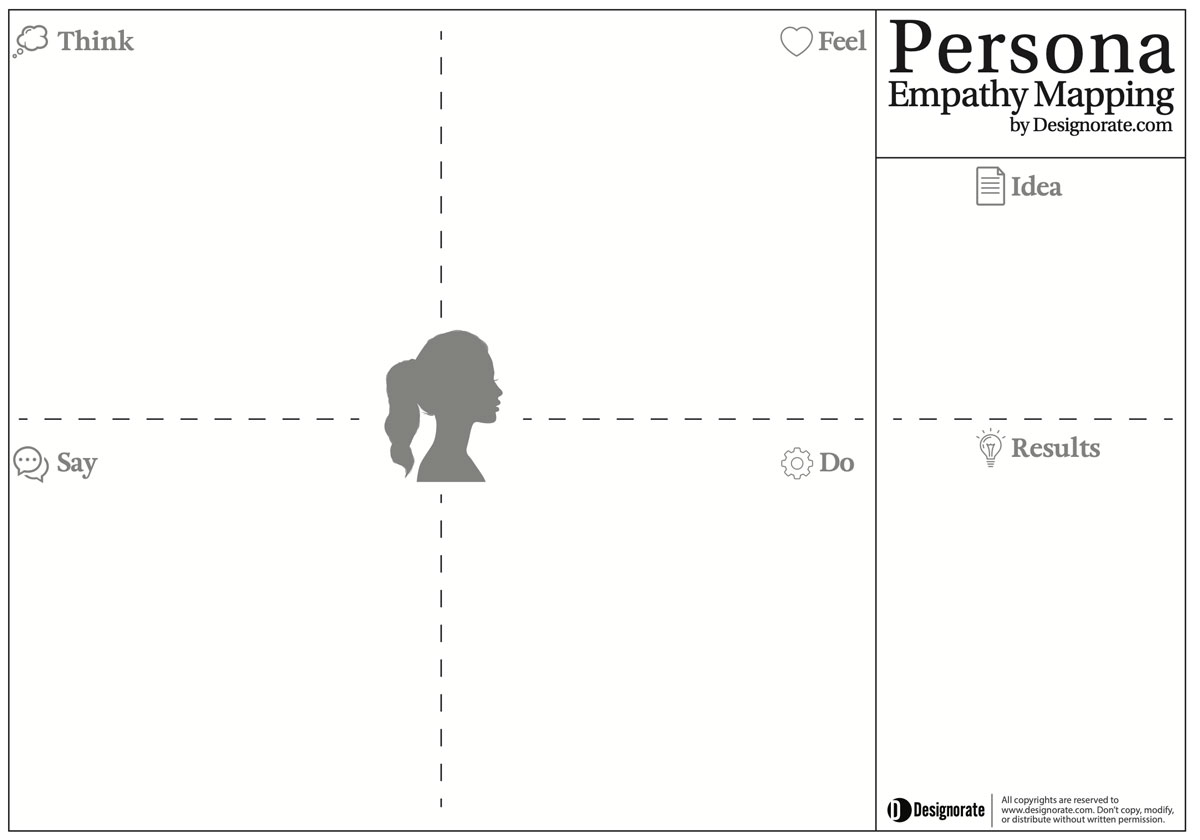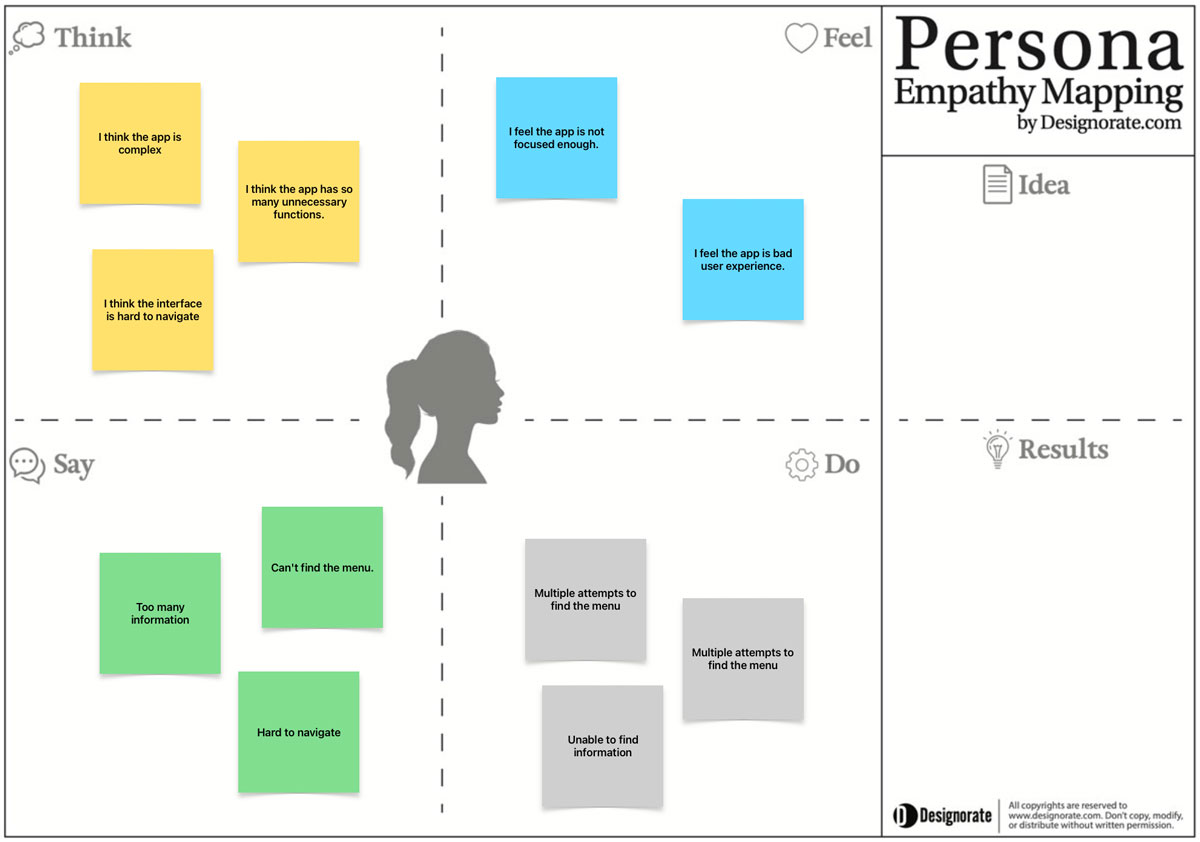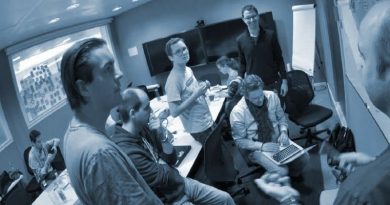How to Use Persona Empathy Mapping in UX Research
A user persona is a tool used to better understand user behaviour in user research by building a virtual avatar that represents the target consumer’s characteristics. However, achieving empathic design requires more than just drawing a virtual character representing the target consumer. It also requires that designers put themselves in the consumer’s shoes to learn more about what they love, hate, think, and feel about the product. This target can be achieved by building a persona empathy mapping that can bridge the gap between the virtual character’s persona and the real consumer’s experience to identify the user’s needs through qualitative research.
What is the Persona Empathy Mapping?
While the persona aims to build a character that reflects the demographic data and interests of the target consumer, empathy mapping tends to focus on the sensory information about the consumer. Empathy mapping builds a persona character that reflects information, such as the user’s attitudes about the problem, what the user sees the product, feels about it, and says about it. The map can be used as part of qualitative research in the UX design process (The Double Diamond Design Thinking Process and How to Use it). Theories related to behavioural design can also help us understand the elements underpinning user behaviour.
Also, it plays an important role in the innovation process, especially when there is not much information available about the consumer experience, either because the product is new or because the empathic relationship between the consumer and the product has not yet been researched. Empathy mapping is not a replacement for the traditional user person as it focuses on the emotional experience from the user’s perspective. It is also helpful to understand the ergonomics principles which may affect the user experience.
User Involvement in the Empathy-Mapping Process
The data collected from the empathy maps could be collected using two main methods based on the number of participants involved in the research and the methods used to collect the data from these users as follows:
1. Individual user empathy maps collect one user data at a time through user interviews or diary studies to capture the user’s emotional state (Design Thinking Tools and Methods Complete Guide). The collected data can be analysed using the Thematic Analysis.
2. The aggregated empathy maps use user feedback from multiple users that represents a specified user segment. In these empathy maps, the data are collected using tools such as focus groups to gather group impressions about the problem. The aggregated empathy maps can synthesise data from field studies and qualitative surveys.
There are other tools that can help collect similar data from the user, such as Consumer Journey Mapping and Kano Model Analysis.

How to Build A Persona Empathy Map
The persona empathy map is a canvas with the character outlined and named in the middle. Four quadrants are created around the character, including four components: Say, Think, Do, and Feel. In another part of the sheet, we recommend the top. The idea and the situation being discussed are identified to focus the collected information on different emotional users’ experiences. The persona empathy map can be created using paper sheets and pens, sticky notes, online brainstorming tools, whiteboard and markers, or a printed template such as our Persona Empathy Mapping Sheet (How to Conduct Online Brainstorming).
You can download our Persona Empathy Map sheet by clicking on the download link at the end of this article.

How to Apply the Persona Empathy Mapping
The session can be held by one or more team members to investigate the emotional experience of the final consumer. The stakeholders can be designers, engineers, marketing executives, and other team members involved in the production process. The session may take around 1-2 hours, including the preparation for groups involved in the discussions. The session should include the following steps:
Step 1:
The colleagues introduced the persona used during the empathy mapping session. The session can include multiple personas if needed. This step can be skipped if the stakeholders know about the persona to discuss.
At this step, the facilitator defines the situation that needs to be covered, i.e. the reason for the session. For example, investigating the persona’s emotions toward specific products or services, dealing with specific situations, or user interactions with a system design.
Step 2:
In this step, the UX teams are divided into groups. Each group can focus on one persona at a time if multiple personas exist. Otherwise, all the groups can focus on the same persona. Each group is given an empathy mapping sheet with four quadrants: Say, Think, Do, and Feel.

Step 3:
In this step, each group completes the persona empathy map based on previous experience and research. Each group is given a specific time to review the file information and how it reflects on the persona. If there is more than one situation to be discussed, groups can move from one situation to another and complete each situation-based empathy map.
Step 4:
Group feedback is then collected and analysed. A group discussion can reveal more information and how to organise the collected information into a unified persona empathy map. The map is displayed in a visible place where it can be seen as a reference throughout the work on the project.
Tips for an Effective Persona Empathy Mapping
Empathy mapping presents an effective tool to collect in-depth information about the user’s empathy about the problem or the design challenge. To this goal, empathy mapping needs to be applied properly to achieve its intended goal:
– Focus on the user’s emotional experience: When collecting the data from users, the focus should be on the emotional aspect of their experience to identify the gap in knowledge about them (Design Thinking Tools for Ideation).
– Extend the conversation: Use the qualitative method, such as user interviews and focus groups, to extend the discussion with the user to get more insight about their experience using an extended narration.
– Adopt the empathy mapping based on the situation: Use the tool based on the situation and the aim of the research. For example, focus groups could effectively drive users to express their experiences. User interviews could also be helpful in collecting private emotional experiences that users may not like to share with others.
Conclusion
The persona empathy map bridges the gap between the virtual persona and the consumers’ real emotions and what they feel toward specific products, situations, or services. It can better understand consumer feelings, including what they feel, say, hear, see, or think about a specific situation. Additionally, the persona empathy mapping session is a short time investment with a huge impact on the innovation process as it contributes to achieving empathy in the final product. You can download our template from the link below. The document is in PDF format with forms you can directly film and print.
Download Persona Empathy Mapping
Summary
Personal empathy mapping is a tool to understand the emotional experience of the users through qualitative data collected using the empathy mapping canvas, which consists of four components: Say, Think, Do, and Feel.
1. Individual user empathy maps collect one user data at a time through user interviews or diary studies to capture the user’s emotional state.
2. The aggregated empathy maps use user feedback from multiple users that represents a specified user segment. In these empathy maps, the data are collected using tools such as focus groups to gather group impressions about the problem. The aggregated empathy maps can be used to synthesise data collected from field studies and qualitative surveys.
1. Focus on the user’s emotional experience: When collecting the data from users, the focus should be on the emotional aspect of their experience to be able to identify the gap in knowledge about them.
2. Extend the conversation: Use the qualitative method, such as user interviews and focus groups, to extend the discussion with the user to get more insight into their experience using an extended narration.
3. Adopt empathy mapping based on the situation: Use the tool based on the situation and the aim of the research. For example, focus groups could be effective in driving users to express their experiences. User interviews could also be helpful in collecting private emotional experiences that users may not like to share with others.






